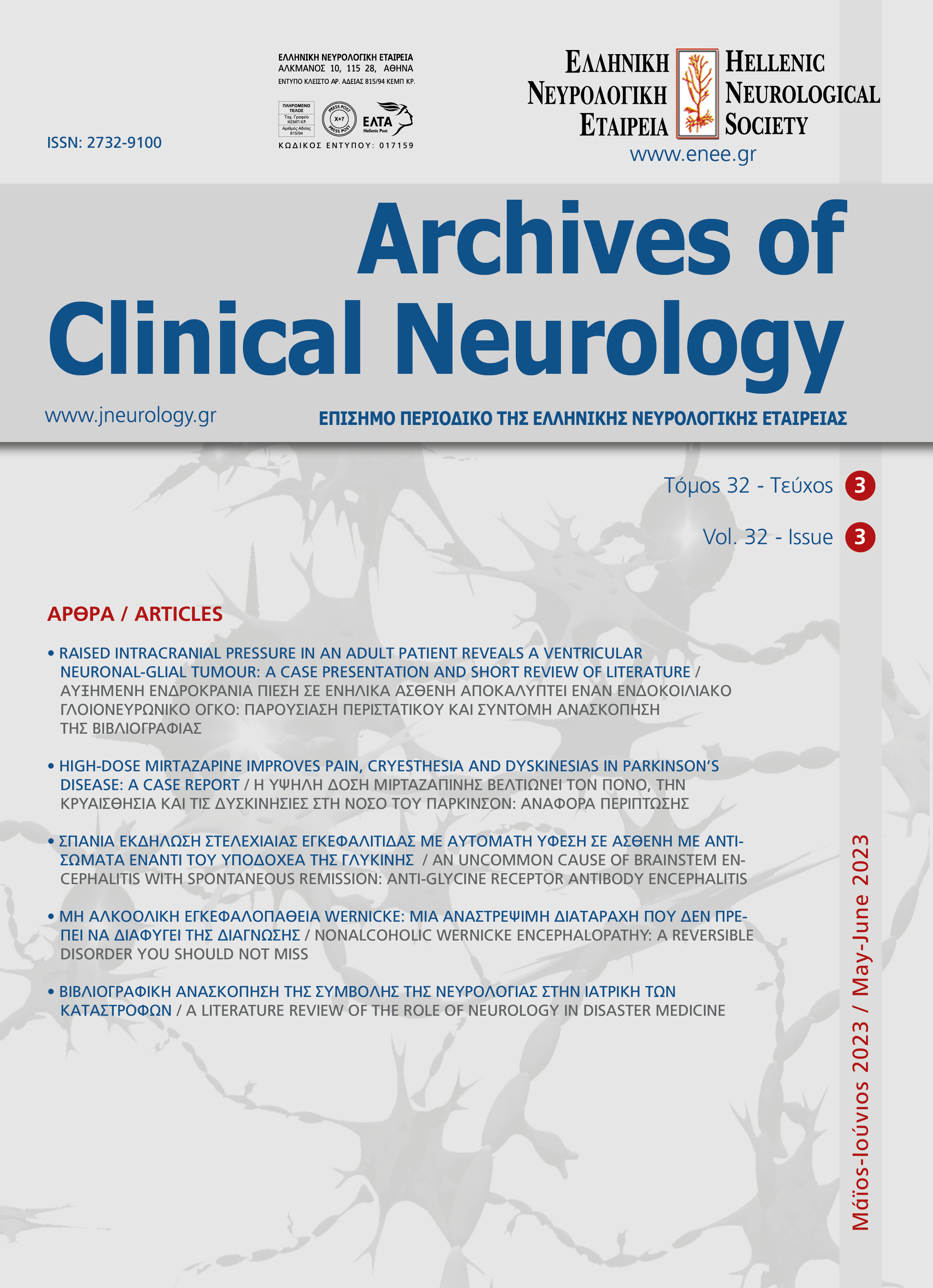HIGH-DOSE MIRTAZAPINE IMPROVES PAIN, CRYESTHESIA AND DYSKINESIAS IN PARKINSON’S DISEASE: A CASE REPORT
Keywords:
mirtazapine, Parkinson Disease, cryesthesia, DyskineasiasAbstract
Introduction: Mirtazapine is a noradrenergic and specific serotonergic antidepressant, which is also
used in the treatment of parkinsonian tremor, resting, and essential tremor and levodopa(L-DOPA)-induced
dyskinesias.
Case report: We report the case of a patient with early-onset Parkinson’s Disease, who exhibited
dyskinesias, musculoskeletal pain, cramps, and cryesthesia whilst on carvidopa, levodopa and entacapone
combination treatment. Upon intake of a high dose of mirtazapine, the aforementioned symptoms
disappeared and did not reoccur with its continued use.
Conclusion: Mirtazapine may be useful in the treatment of L-DOPA-induced dyskinesias and may also
ameliorate pain and other somatic symptoms that accompany PD, thereby increasing the overall quality of
life of these patients.


